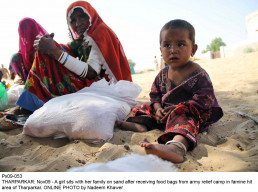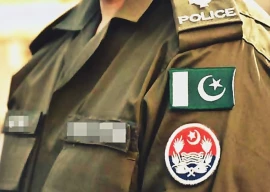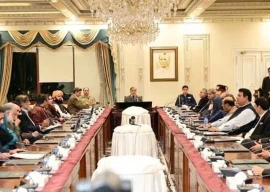
With three-time higher fatalities from security operations, violence claimed over 7,500 deaths in 2014 in Pakistan.
The largest contributor remained the security operations in various parts of the country, resulting in 3,380 deaths. Targeted killings accounted for 2,125 deaths, followed by 982 due to militant attacks, 516 in other forms of terrorism. The US drone strikes killed 209 people in the country’s tribal region.

These statistics have been compiled by the Centre for Research and Security Studies (CRSS) in its annual conflict report “Fatalities from Violence in Pakistan in 2014”. The report’s executive summary was launched on Friday.
“The numbers show that the society is getting more and more violent. Radicalisation and extremism are on the rise,” said CRSS Executive Director Imtiaz Gul. He said that Pakistan faced a range of internal security issues in 2014, resulting in a wide variety of violence. These include terrorism, militant attacks, sectarian violence, crime, targeted killings, security operations and drone strikes.
According to the report, compared to 5,687 deaths in 2013, a total of 7,655 people died in 2014 as a direct result of violence, an increase of about 35 per cent.
The most significant increase in violence was observed in the Federally Administered Tribal Areas (FATA) where fatalities more than doubled from 1,457 in 2013 to 3,399 in 2014. “A big reason for this marked increase is the military-led Operation Zarb-e-Azb in the North Waziristan,” the report said.
The second largest increase was in Punjab, where deaths from violence rose from 120 in 2013 to 309 in 2014, a drastic increase of 158 per cent. In one major incident, 60 people were killed in the bombing at the Wagah Border on November 1, 2014.

Surprisingly, the report states that Khyber-Pakhtunkhwa (KP) saw a decrease in violence-related deaths, with 945 deaths in 2014 from 1,031 the previous year. Gilgit-Baltistan (GB) saw the largest decrease in violence-related casualties, with only three in 2014 and 20 in 2013.
“The sudden spike from June 2014 onwards is clearly attributable to the start of Operation Zarb-e-Azb,” says the report. The findings revealed that deaths from violence accelerated towards the end of the year, pulling significantly ahead of the same-month figures from 2013. The last three months in 2014 were especially bloody, with an alarming 258 percent increase from the same period in 2013, it added.
All in all, compared to last year the fatalities from security operations were three times higher, while the fatalities from militant attacks, terrorism and targeted killings are more than 15 percent lower this year.
Further, 1,498 of the total fatalities were a direct result of terror attacks, of which militant organisations claimed responsibility for 613. Thus, around 41 percent of all fatalities attributed to terror attacks were claimed by militant groups.
Deadliest year for almost all
The year remained deadliest for almost all as a total of 133 women and 270 children, including male and female, were also the fatalities caused by violence of one form or another. In case of educational institutions, 40 schools and 3 colleges were also bombed, while 26 principals, professors and teachers, as well as 143 students were also killed.
The report states that 186 politicians, including party workers, 52 individuals with religious organisational affiliations and nine members of the journalist fraternity were also killed in 2014.
The year was deadliest for militants as well, as the largest number of deaths in 2014, well over half in fact, were militants (3,460) and criminals (595). The second largest group to be killed in violence-related incidents was civilians at (2,395), followed by security officials at 741.
Districts with highest numbers
Karachi had to bear the most fatalities, 2,029. North Waziristan and Khyber Agency in FATA witnessed 1,825 and 1,187 deaths respectively. Collective deaths in FATA, however, are significantly greater than those in Karachi. Peshawar had 431 deaths, while Quetta saw 170.
The final report would be launched within a week.
Published in The Express Tribune, January 10th, 2015.























1714117028-0/BeFunky-collage-2-(1)1714117028-0-270x192.webp)

1714494590-0/Pauline-Hanson-(2)1714494590-0-270x192.webp)










1714370039-0/ojwilson-(1)1714370039-0-270x192.webp)
-(1)1714378140-0/AliAminMaryam-(4)-(1)1714378140-0-270x192.webp)








COMMENTS
Comments are moderated and generally will be posted if they are on-topic and not abusive.
For more information, please see our Comments FAQ